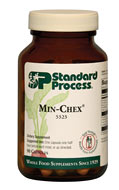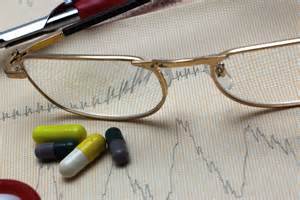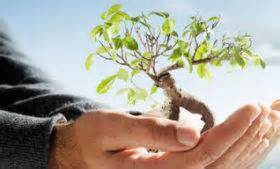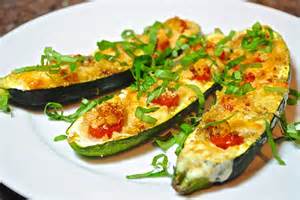What is Osteoporosis
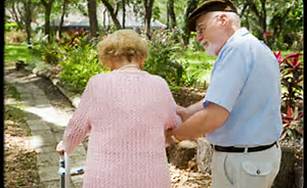
|
the cure of the whole.” Plato |
According to World Health Organization, osteoporosis is second only to cardiovascular disease as a global healthcare problem. Medical studies show a 50-year-old woman has a similar lifetime risk of dying from a hip fracture as from breast cancer. Statistically, over the age of 50, one in two women and one in eight men in the United States will experience a fracture due to osteoporosis. That's staggering! Even more surprising is that it is no longer limited to the elderly. Loss of bone density is impacting our younger population at a significant rate. According to
When looking at statistics, no nation is immune to huge increases in osteoporosis that are being reported worldwide. Currently, the highest calcium-consuming nations have the most osteoporosis.
Eskimos have the single highest rate of osteoporosis worldwide, yet they consume more calcium than any other culture on Earth. Their diet, composed primarily of fish, walrus & whale provides them enormous amounts of calcium (over of 2,000 mg a day) because they boil and consume the bones. Eskimos calcium intake is twice the United States RDA. Many might say Eskimos' higher osteoporosis rate is due to limited sunlight making them deficient in vitamin D. This is false, because the whale, seal and fish oils they eat are among the richest of vitamin D foods. Eskimos have all of their vitamin D needs meets through diet, not the sun. It is obviously not due to their vitamin D levels, which are normal, but instead to the Eskimos' rich calcium and protein diet.
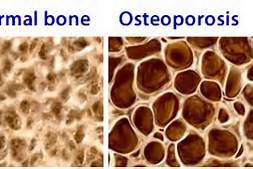 |
Norway, Europe and America are right behind the Eskimos in terms of osteoporosis prevalence. |
Nations with previously low-dairy and protein consumption rates who later rated high in dairy and protein consumption (due to fast-food modernization), osteoporosis incidence increased. Africa has the lowest osteoporosis rate worldwide, as well as the lowest protein and calcium consumption.
Osteoporosis causes bones to become weak and brittle - so brittle that a fall or even mild stresses like bending over or coughing can cause a fracture. Osteoporosis-related fractures most commonly occur in the hip, wrist or spine. Osteoporosis isn't a disease that causes weak and brittle bones that leads to an increased risk of fracture. Osteoporosis is the name given to a diagnosis of weak bones. In other words, the weak bones happened first, and then the diagnosis of osteoporosis followed.
According to research low bone density alone does not cause fractures. In one study of hip fractures in women, only 57% of women who fractured had low bone density, while 27% had medium bone density and 16% had high bone density! And keep in mind, 95% of the women in this study did not fracture at all, regardless of their bone density.
In fact, research shows that a severely osteoporotic vertebra with only 50% its normal amount of bone is still strong enough to withstand five times its normal strain load. This helps explain why in some countries, including France, Germany, China and Japan, women on average have lower bone density than in America, yet experience far fewer osteoporotic fractures. Low bone density is simply not the real problem.
You may be wondering, if low bone density doesn’t cause fractures, what does? The answer lies in the quality of the bone, not simply the quantity.
Bone is living tissue and continually regenerates itself, which is constantly being absorbed and replaced. At any given moment there are as many as a million places in your skeleton that are under repair. Tiny micro fractures are healed, and old, fragile bone is replaced with stronger, new bone. This dynamic process gives your skeleton the ability to maintain high-quality bone, even as bone density declines. And high-quality bone is strong bone.
Osteoporosis occurs when the creation of new bone doesn't keep up with the removal of old bone. It occurs when there is an imbalance between new bone formation and old bone desorption. The body may fail to form enough new bone, or too much old bone may be reabsorbed, or both. When this self-repair process is disrupted, the structure of the bone begins to weaken. Usually this happens because of an imbalance in bone metabolism - too much bone is dissolved, too little bone is built, or, most likely, a combination of both.
Declining bone density is a common symptom of imbalanced bone metabolism, and thin, poor quality bone is most likely to fracture. But even bone with normal mineral density can break if it is not well maintained. Build better bones, not just denser bones.
Usually, the loss of bone occurs over an extended period of years. Often, a person will sustain a fracture before becoming aware that the disease is present. By then, the disease may be in its advanced stages and damage may be serious. Osteoporosis may begin with no outward signs or physical sensations. Major changes in bone can occur before any pain is felt.
According to Medical Alternative Research if you suffer with bone spurs, arthritis, bursitis, tendonitis, disk deterioration, spinal stenosis, bones and joints that will not heal, you have a nutritional problem, not a medical problem with the exception of injury to joint.
In the case of spurs, bones become soft from osteoporosis. Virtually all spurs are on tendons and ligaments. As these pull on weak bones, a portion of the bone itself can be pulled away. The body will then deposit calcium to the area in an effort to patch it up. Any bone deposit with a point is called a bone spur. The rest are called calcium deposits. They are all caused by injury or osteoporosis. As bones become weaker and weaker, the body hardens tissues like cartilage and connective tissue to take the place of bone. This becomes arthritis, stenosis and even complete joint deterioration.
- Everything you need to know about your bones
- What surprising functions they play
- What is mineral metabolism in bones
- Why bones are living structures


